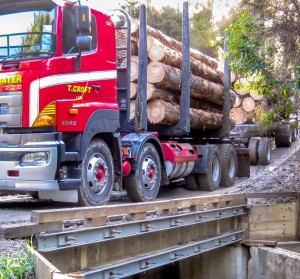An innovative Christchurch start-up has signed a lucrative agreement with a Canadian company for its laminated timber technology. Source: Stuff NZ
The deal could see a product developed by Prestressed Timber after the Canterbury earthquakes used in buildings throughout North America.
The firm is part owned by the University of Canterbury, where the technology that uses pinus radiata in laminated form to give strength and flexibility to building structures was developed.
“We’ve been helping a Canadian company with a 15 storey timber building in Ottawa … the Canadians have a great deal of interest in it,” said University of Canterbury engineering professor Andy Buchanan, one of the firm’s four owners.
“The Americans were very concerned about damage to concrete buildings in earthquake.”
There was a big international movement into low damage building design which until recently had only been available in concrete and steel, Buchanan said.
For the deal Prestressed Timber was backed by a partnership with the Structural Timber Innovation Company, which counted Carter Holt and Nelson Pine Industries amongst its shareholders.
The firms have jointly signed with Canadian “forestry industry” company Forest Products Innovation for it to use the timber technology in North America, Mr Buchanan said.
It involved threading prefabricated timber segments horizontally and vertically into multilevel buildings.
In some cases steel cables are used to anchor the laminated timber and could draw the building back into shape after it has moved during an earthquake.
Mr Buchanan said the strength of the timber allowed for the multilevel construction and could also be used in buildings with high fire resistance.
The timber was already being used in Wellington and Christchurch but he was frustrated it was not more widespread in the Canterbury rebuild.
“I’m disappointed there has not been a bigger take up in Christchurch … all the buildings going up in Christchurch with Chinese steel could have been built with wood from New Zealand forests,” he said.
He would not comment how much the agreement with the Canadian company was worth except that it was significant but not worth millions of dollars at this point.






